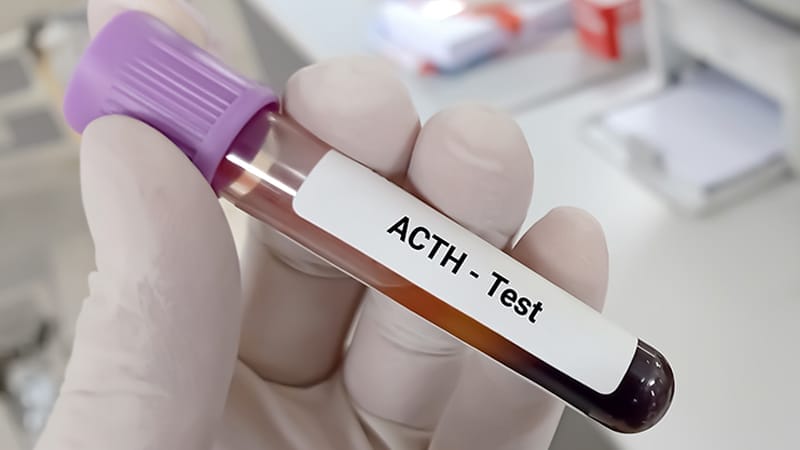Cushing’s Disease in Dogs: Signs and Treatment
Dogs with Cushing’s disease produce an excessive amount of cortisol, which can damage their organs. Learn the signs and treatment.
Cortisol, a hormone naturally produced in the body, plays a crucial role in helping dogs respond to stress. However, when the endocrine system produces an excessive amount of cortisol, it can lead to detrimental effects on their organs. This condition, medically called hyperadrenocorticism, is known as Cushing’s disease (or Cushing’s syndrome). It’s often caused by the presence of tumors, which can be either malignant or benign, on the adrenal glands near the kidneys or the pituitary glands at the base of the brain. Read on to learn more about Cushing’s disease in dogs, including the causes, signs, treatment options, and the prognosis for your pet.
What Causes Cushing’s Disease in Dogs?
Cushing’s disease, a condition characterized by an overproduction of the hormone cortisol, can arise from several underlying causes. The most prevalent culprit is a tumor of the pituitary gland, a small gland nestled at the brain’s base. This tumor disrupts the gland’s normal function, leading to excessive production of adrenocorticotropic hormone (ACTH), which in turn stimulates the adrenal glands to produce excessive cortisol.
In some cases, the culprit lies within the adrenal glands themselves. Tumors or hyperplasia, an abnormal overgrowth of tissue, can develop directly on these glands, causing them to overproduce cortisol. This form of Cushing’s disease is known as primary hyperadrenocorticism.
Another potential cause of Cushing’s disease is the prolonged use of corticosteroid medications. These medications are commonly prescribed to treat various inflammatory conditions in dogs. While effective in managing inflammation, long-term use of steroids can inadvertently lead to an overexposure of the body to cortisol-like effects. If that happens, dogs can develop medication-induced Cushing’s, known as iatrogenic Cushing’s disease in dogs.

Clinical Signs of Cushing’s Disease in Dogs
While Cushing’s disease can affect canines of all ages, it is most diagnosed in middle-aged to senior dogs, with certain breeds exhibiting a higher predisposition to the condition. Dogs may show signs such as:
- Increased thirst and urination: This is one of the most common signs of Cushing’s and occurs due to the increased production of cortisol, which affects the body’s water balance. Dogs with Cushing’s disease may drink and urinate more frequently and produce larger volumes of urine.
- Increased appetite: Dogs with Cushing’s often have an increased appetite due to the elevated levels of cortisol stimulating the body’s hunger response. This can lead to weight gain or difficulty losing weight, even if the dog is not consuming more food than usual.
- Weight gain or difficulty losing weight: Weight gain is a common sign of Cushing’s disease and is often associated with the increased appetite and redistribution of fat that occurs with the condition. Dogs may have a pot-bellied appearance and find it difficult to lose weight, even with restricted diet and exercise.
- Lethargy and muscle weakness: Dogs with Cushing’s may experience lethargy and weakness because increased levels of cortisol affect the body’s energy metabolism. They may tire easily during exercise or play and have difficulty getting up or down. This can significantly impact the dog’s quality of life and may make it difficult for them to perform their usual activities.
- Thinning of the skin and hair loss: Their skin may become fragile and easily bruised, and the hair could become brittle and fall out when a dog has Cushing’s because of the increased cortisol levels. This can affect the dog’s overall appearance and may make them more susceptible to a variety of skin conditions.
Not all dogs with Cushing’s disease will display each of these signs, and some dogs may only have mild signs. If you suspect that your dog may have Cushing’s disease, it is essential to consult a veterinarian for proper diagnosis and treatment.

Diagnosing Cushing’s Disease in Dogs
Diagnosing Cushing’s in dogs involves a comprehensive evaluation by your veterinarian. The diagnostic process typically begins with a thorough physical examination, during which your veterinarian will assess your pet’s overall health, body condition, and any visible signs of the disease. Your veterinarian will also inquire about your dog’s medical history, including any medications they’re taking, and any signs you have observed.
Based on the findings of the physical examination and medical history, your veterinarian may recommend a series of diagnostic tests to confirm the presence of Cushing’s disease and determine the underlying cause. These tests may include:
- Blood tests: Blood tests can measure the levels of cortisol in the blood, which can be elevated in dogs with Cushing’s disease. Specialized blood tests, such as the adrenocorticotropic hormone (ACTH) stimulation test or the low-dose dexamethasone suppression test, may also be performed to assess the functionality of the adrenal glands and pituitary gland.
- Urine tests: Urine tests can measure the levels of cortisol in the urine, which can also be elevated in dogs with Cushing’s disease.
- Imaging tests: Imaging tests, such as an abdominal ultrasound or a magnetic resonance imaging (MRI) scan, may be recommended to identify any underlying tumors or abnormalities in the adrenal glands or pituitary gland. These tests can help determine the cause of Cushing’s disease and guide the appropriate treatment.
Your veterinarian may also recommend additional tests or procedures based on your dog’s condition and response to the initial diagnostic tests. Accurate diagnosis is important for determining the most appropriate treatment plan and ensuring the best possible outcome for your pet.
Is Treatment Critical with Cushing’s Disease in Dogs?
If left untreated, Cushing’s disease can cause serious health problems and even death. Your veterinarian will help you decide whether treatment is necessary by evaluating your dog’s early diagnosis and treatment can help slow the progression of the disease and improve your dog’s quality of life.
Dogs that have Cushing’s disease are also at higher risk for developing:
- Diabetes and kidney failure
- Blood clots – mainly involving the lungs, legs, and brain
- Infections of the lungs, skin, bladder, and kidneys
- Inflammation of the pancreas (pancreatitis)
- High blood pressure (systemic hypertension)
The primary goal of treatment for Cushing’s disease is to reduce the levels of cortisol in the body and manage the signs of the disease. Treatment options may include medication, surgery, radiation, or a combination of all three.
How is Cushing’s Disease in Dogs Treated?
The treatment options for Cushing’s differ depending on whether your pet has the syndrome due to a problem with their pituitary or adrenal glands.
Treatment options can include:
- Medication: The most common (about 85%) form of Cushing’s is pituitary-dependent which is not curable but can be managed to improve your dog’s quality of life. This version of Cushing’s is generally treated with medications, such as Vetoryl® (trilostane) or Lysodren® (miotane), that must be taken for their lifetime. Trilostane inhibits the production of cortisol by the adrenal glands while miotane destroys the cells in the adrenal glands that produce cortisol.
- Surgery: The 15% of dogs that have adrenal-dependent Cushing’s are generally treated with surgery and medication. The goal of the surgery is to remove the tumor and restore normal cortisol production. If the entire tumor is removed and it is not malignant, there is a good chance that your pet will regain normal health.
- Radiation therapy: Less commonly, a CT scan and radiation may be used if a pituitary tumor is large and causes neurologic signs. Radiation therapy can help shrink tumors and reduce the production of cortisol. It may be used in conjunction with surgery or medication to treat Cushing’s disease.
If your pet has iatrogenic Cushing’s disease caused by oral or injectable steroids given to them for medical reasons, treatment is to slowly discontinue steroids and manage the secondary issues they may experience. The disease being treated by the steroid therapy may recur and hormone replacement therapy may be needed for the adrenal glands.
Regardless of the treatment approach, regular monitoring is essential to assess the effectiveness of the treatment and to manage the signs of Cushing’s disease in dogs. This may include regular physical examinations, blood tests, and urine tests. Your veterinarian may also recommend dietary changes and lifestyle modifications to support your canine’s overall health and wellbeing.

What to Expect After Treatment Begins
Once your dog begins taking medication, you should see improvements in many of your dog’s signs over the following weeks. Because the medications are lifelong, your veterinarian will closely monitor your pet to ensure the medication is working and adjust the dosage as needed.
When a dog has Cushing’s disease, ACTH is a hormone produced in excess by the pituitary gland, which stimulates the adrenal glands to produce cortisol. To ensure your pet receives the best medication dosage, your veterinarian may use a common blood test called an ACTH Stimulation Test. The test is generally performed within two weeks after therapy begins and every few weeks thereafter until your dog is receiving the right amount of medication for their individual needs. Once the correct dosage is established, they are typically evaluated every 3-4 months.
Contact your veterinarian if you notice any of the following signs after your dog begins Cushing’s treatment:
- Changes in appetite, including eating slower or not finishing a meal
- Vomiting or diarrhea
- Decreased activity and increased sleeping
Dog owners play a critical role in this process by closely observing their pet’s behavior and promptly reporting any changes to the veterinarian.
Prognosis for Canine Cushing’s Disease
Dogs with mild Cushing’s disease typically have a more positive prognosis than those with moderate or severe disease. The underlying cause also plays a role in the prognosis. Dogs with pituitary-dependent Cushing’s disease typically have a more positive prognosis than those with adrenal-dependent Cushing’s disease. Finally, your canine’s overall health is also important. Dogs who have additional health conditions, such as heart disease or cancer, may experience a more unfavorable prognosis compared to those without any other underlying health issues.
With treatment, most dogs with Cushing’s disease can experience a significant improvement in their quality of life. Treatment can help control the clinical signs of the disease, such as increased thirst, urination, appetite, and weight gain. It can also help improve your dog’s energy level, skin and coat health, and overall wellbeing.
Because treatment for Cushing’s disease is typically lifelong, it is important for you to partner with your veterinarian to monitor your dog’s condition closely to ensure that the disease is well-controlled. With careful management, dogs with Cushing’s disease can live long, healthy lives.
If you suspect your dog may have Cushing’s disease, it’s important to contact your family veterinarian for an accurate diagnosis and a tailored treatment plan. They may recommend a specialist in Cushing’s disease, such as those at MedVet, who possess expertise in this condition.
To find the MedVet nearest to you, visit https://www.medvet.com/locations.
FAQs
Contents



